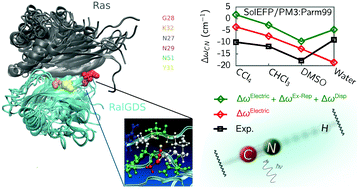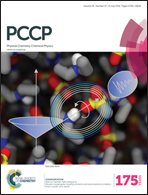Vibrational solvatochromism of nitrile infrared probes: beyond the vibrational Stark dipole approach†
Abstract
Systematic probing of local environments around biopolymers is important for understanding their functions. Therefore, there has been growing interest in in situ measurements of molecular granularity and heterogeneity through the systematic analysis of vibrational frequency shifts of carbonyl and nitrile infrared probes by vibrational Stark dipole theory. However, here we show that the nitrile vibrational frequency shift induced by its interaction with the surrounding molecules cannot be solely described by electric field-based theory because of the exchange–repulsion and dispersion interaction contributions. Considering a variety of molecular environments ranging from bulk solutions to protein environments, we explore the distinct scenarios of solute-environment contacts and their traces in vibrational frequency shifts. We believe that the present work could provide a set of clues that could be potentially used to design a rigorous theoretical model linking vibrational solvatochromism and molecular topology in complex heterogeneous environments.


 Please wait while we load your content...
Please wait while we load your content...